The 18-inches of rainfall annually shows here!
The tiny community of Patagonia, just 19 miles north of the Mexican border, is as unique as the landscape. Founded in 1899 as a supply town for the many mines and cattle ranches in the area, it was also a railroad stop for a line from Nogales, Mexico to Benson, Arizona where it met the main line of the Southern Pacific Railroad.
The old train station is now Town Hall.
The railroad pulled out in 1962 shortly after the mines closed and the community would have become a ghost town like a host of others in Arizona except for two things: artists and birders. Artists of every description (painters, sculptors, metal-workers, beaders, ...) soon flooded the area and set up shop. Business must be good as the one I talked to said her shop had been there for over 30 years. Hundreds of species of birds migrate through Patagonia making it an internationally renowned birder area attracting thousands of visitors annually. And, of course, these tourists need someplace to eat and sleep so several B&B's as well as eclectic eating establishments sprang up.
We stopped for lunch at the Velvet Elvis (#36), a funky little place that would be easy to miss if you weren't looking for it. And as soon as we walked in, I knew how it got its name!
Velvet Elvis - 292 Naugle Ave. Patagonia, Arizona
Anyone who has been to a flea market has seen dozens of velvet paintings, usually of bare-breasted island women or ripply-muscled matadors... and, of course, Elvis. Interestingly, painting on velvet is not new. Marco Polo reported seeing paintings on velvet during his 14th century travels. During the Victorian era, it was a popular hobby among the upper middle class. Then what had been strictly upper-crust art moved to the lower-crust as it became popular with street artists in Tijuana and other Mexican border towns, reaching its peak in the late 1960's at the height of Elvis' immense popularity on the music scene. Why Elvis on velvet? Some say it just goes together like a peanut butter and banana sandwich.
Even without its artwork, the Velvet Elvis is a fabulous restaurant. Owner and executive chef Cecilia San Miguel brings an out of the ordinary vision to her restaurant's menu using only fresh ingredients, many organic and local if possible. She pairs ingredients with abandon creating unique pizzas, calzones and salad dishes.
We had "The Good, the Bad & the Ugly" pizza - a hand-tossed, thin crust pie with red sauce, pepperoni, sausage, Canadian bacon, mushrooms, black olives, caramelized onion and mozzarella cheese seasoned to perfection. Yeah, my mouth is watering just typing the description!
With full tummies, we continued our trip around the mountains to another small town, Tubac (#57). Although just 18 miles as the crow flies, 39 miles of paved roads took us south to Nogales and then north again on I-19 to this community that time seems to have forgotten.
Tubac is the oldest European settlement in Arizona. The Presidio San Ignacio de Tubac was established in 1752 by Spanish colonizers. Tubac Presidio State Park, Arizona's first state park, has done an excellent job preserving archeological remnants of the old presidio as well as documenting its fascinating history and we began our visit to Tubac there.
Along with a fabulous history lesson detailing the different groups (Pima, Tohona O'odam, Spaniards, Mexicans, Apaches, American settlers, etc.) that lived and fought in the area, the museum also has some seriously cool artifacts and exhibits. For example, Arizona's first newspaper, "The Weekly Arizonian," was printed in Tubac in March of 1859 and the museum houses its printing press. The paper closed and reopened several times before the printing press was moved to Tombstone where "The Epitaph" was printed. "The Weekly Arizonian" was the cause of Arizona's first recorded duel. Sylvester Mowry, a prominent citizen and Southern sympathizer in what is now southern Arizona, thought Arizona should be a separate territory (at the time it was part of the New Mexico territory) to ensure it becoming a "slave state" while the editor of the paper, Edward Cross, thought otherwise. A duel ensued (where the museum now stands) with both missing the other person on the first two shots. Cross' rifle malfunctioned on the third shot at which time Mowry declared that a southern gentleman would never shoot an unarmed man. The men then bought a 42-gallon keg of whiskey and treated the town.
Top left: original adobe brick wall section of the Presidio
Top right: millstones used for grinding corn, wheat and other grains
Lower left: Territorial Seal
Lower right: Arizona's first printing press
A well-worn path is all that marks one of Arizona's highways of the past. Camino de Tumacacori was patrolled by Spanish soldiers from the Presidio in the 1700's and extended from missions and towns in Sonora, Mexico to Tubac, north to Tucson, and eventually west to San Francisco. Juan Bautista de Anza, along with his soldiers, their wives, children, servants and herds of cattle, travelled this highway passing this location on their way to California where they founded San Francisco in 1775. It was used for over 200 years and today is known as the Anza Trail.
The Anza Trail ... an old interstate freeway!
An old adobe home sits on the grounds of the park. Built in the 1890's, the modest home was typical of most in the area and consisted of two rooms: a living room and a smaller room (probably a bedroom) both with dirt floors. A kitchen was added later followed by running water, electricity and a wood floor. The "bathroom" remained outside.
The Rojas House
The rooms look fairly modern now - early to mid-1900's!
There is much more to see at Tubac Presidio State Park and we plan to visit there again. Today Tubac is known internationally as Arizona's only true artist colony with over 90 galleries and studios. It reminds me a little of a hippie community with shops selling pottery, homemade soaps and candles, jewelry and kites as well as galleries with sophisticated (meaning expen$ive!) paintings.
There is definitely something for every taste... painters, sculptors, potters, artisans, jewelry-makers all call Tubac home.
We liked this shop filled with metal yard art, pottery and furniture from Mexican artisans. I thought the eight-foot tall giraffe was fun!
Tubac is unquestionably unique... a town of contrasts. We spent an afternoon exploring it but will definitely return to do more shopping and sample an eatery or two.
On the way home we were treated to another magnificent Arizona sunset!
Thumb Up or Down: Up!
Miles Round Trip: 435.4 miles
Miles to Date: 8012.9 miles
Percent of List Completed: 73%
Date of This Trip: August 10-11, 2012
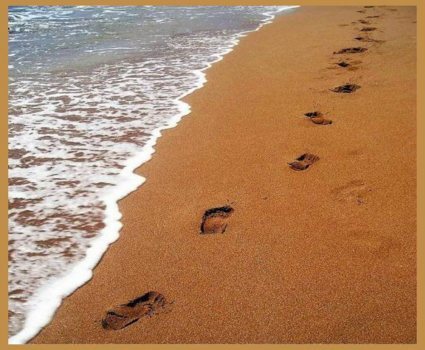
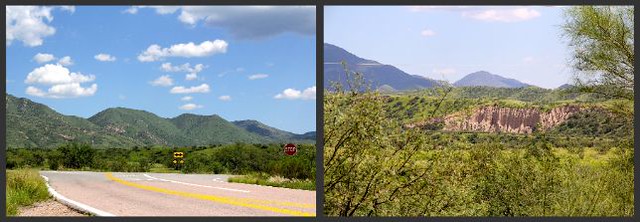
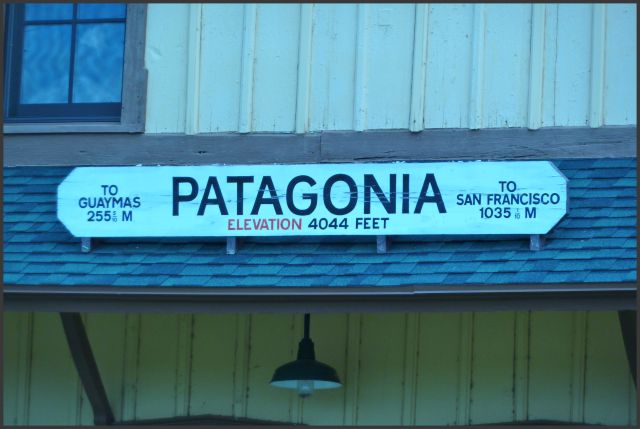


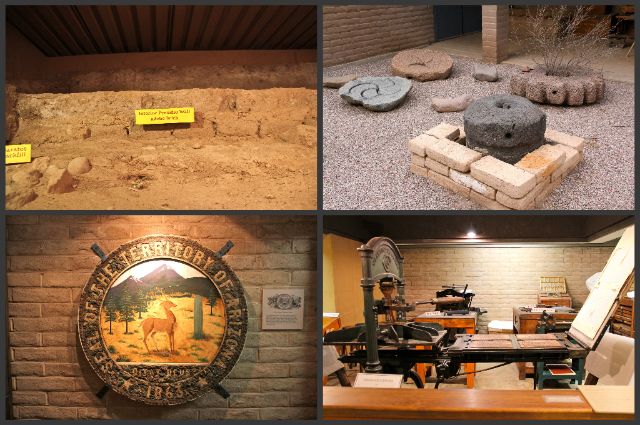

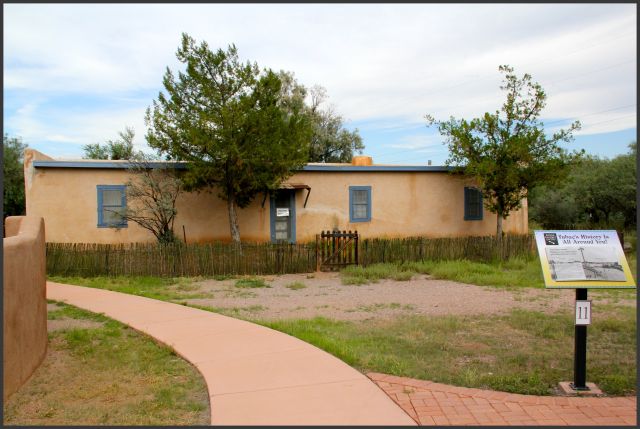
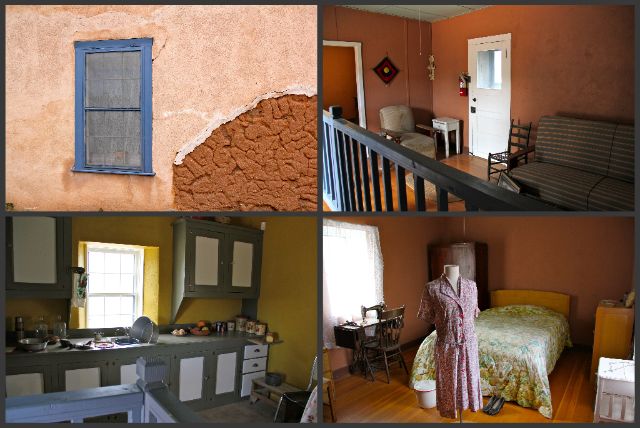
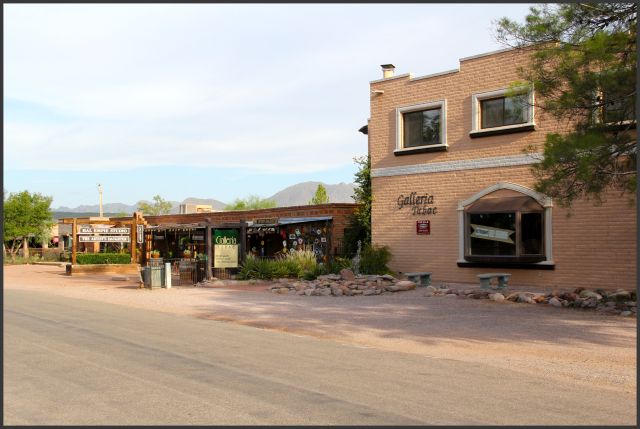
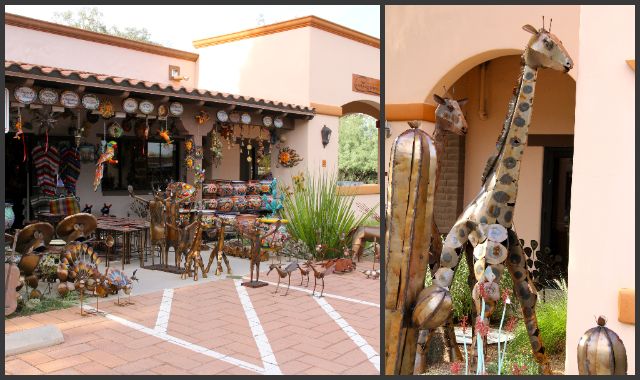
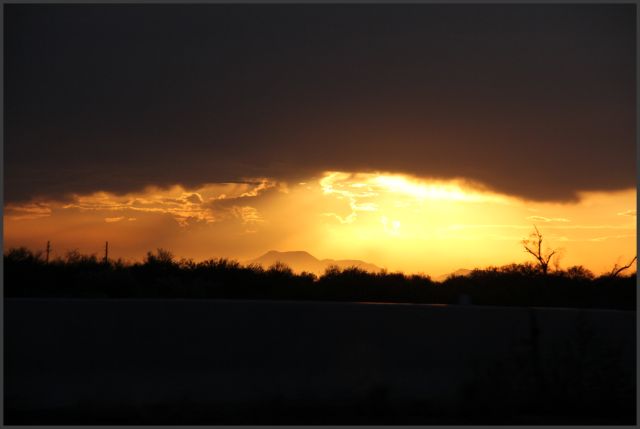
No comments:
Post a Comment